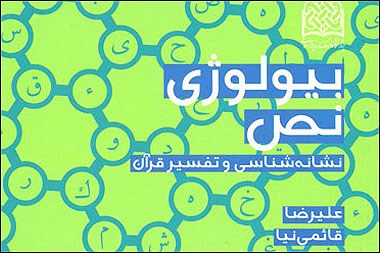By: Dr. Alireza Qaeminia
Semiotics is the general study of symbolic system, including language. Sometimes it is defined as the science of signs. As a literary theory, it has increasingly gained grounds in the last two or three decades of twentieth century. Semiotics is traditionally divided into three areas: syntax, or the abstract study of interrelation of signs; semiotics, or the study of relation between the signs and those objects to which they apply; and pragmatics, or the relationship between users and the system.
This book is not a book on semiotics, but it is a study on the relation of semiotics to the interpretation of Quran. Semiotics has different effects on the study of Quran. It can provide an exact methodology for the interpretation of that holy book. It can also show how the meaning system of Quran works and how words in Quran get their meaning.
Using of the achievements of semiotics, the author yields a new methodology for the interpretation. He calls it “the inter-textual method of interpretation. According to this method, the inter-textual relations of the text to other texts actualize its meaning possibilities. This means that the relation of Quran to other texts, for example to philosophical texts, actualizes its philosophical possibilities and reveals its philosophical aspect. Quran has two kinds of relations. Internal relations are the relation of different verses to each other, and the external relations are the relation of these verses to other texts.
Quran has two levels of signification: primary and secondary levels. At first level, the reader examines the internal relations and therefore explores the primary significations. But at the secondary level, he studies the external relations, and therefore reaches the secondary significations.
Inter-textual relations have many effects on the text possibilities and actualize the text from different points: they sometimes help us to explore the meaning of text. In addition, they can determine in which way, literal or figurative, we should understand the text. In many cases, they can cast light on the internal relations in the text. Inter-textual relation have decisive role in the reconstruction of the narratives of the text and help the reader to fill the gaps and to find missing points in the narratives.
The book provides a clear and comprehensive introduction to what relation can be found between semiotics and the interpretation of the Quran in general. It also reads old topics in this area in a semiotic way.
Semiotic is an important element in the Islamic thinking and there is not an alternative to it in the Islamic tradition. The Quran is the word of God, and its words are the signs (Ayat) of God. The world is also full of signs (Ayat) of God. Therefore, every Muslim finds himself in double need of semiotics; or the science of signs.




